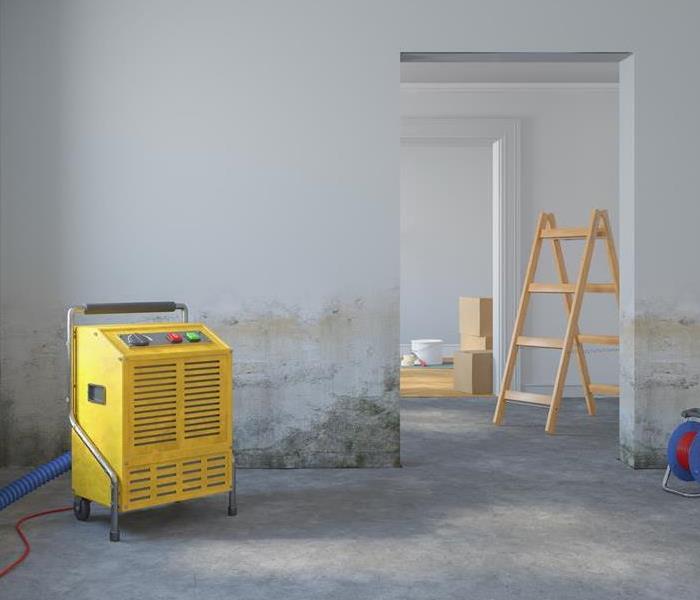The Steps Involved in Water Damage Restoration
3/6/2023 (Permalink)
Having to deal with water damage is a terrible thing. Not only will you have to do some major clean-up, but you'll also be very frustrated over the costs of fixing your property and the time it takes to get things back to normal. Before you do anything else, you should understand the steps involved in water damage restoration so that all of your bases are covered.
Step 1: Immediate Safety Precautions
When you find water damage, your first step should be to ensure the safety of everyone in the household.
If the source of a water-damage problem is clear, like a pipe leak or flooding from rain or snowmelt, move your family and pets to safety before beginning any clean-up effort. Make arrangements for temporary housing (such as with friends or relatives) while you restore your home.
Before allowing anyone to return to the house, turn off any electric and gas services.
Step 2: Remove Any Excess Water from the Scene
When your home has been flooded, you need to immediately remove excess water. Flooded homes are prone to growing mold and other health issues—and preventing structural damage is essential too! There are several ways to eliminate standing water.
- Ventilating the room by opening windows to facilitate moisture-laden air leaving through evaporation
- Place towels on top of puddles to absorb excess liquid
- Use large commercial fans and dehumidifiers
- Mopping with towels or rags
Step 3: Dispose of Any Items That Cannot Be Restored Due to Extensive Water Damage
Remove any items that cannot be restored due to extensive water damage. This includes books, furniture, clothing, and other belongings. If you can't clean it thoroughly without damaging its quality, throw it away. It is crucial to properly dispose of items that are no longer used to prevent mold growth and illness.
If you are still determining whether an item can be restored or not, consult an expert. The professionals at a restoration company will have the tools and expertise necessary to determine whether your belongings can be saved or not.
Step 4: Drying and Dehumidification
The drying process is the most critical step in water removal. You must thoroughly dry your home to prevent mold growth and health issues. Use dehumidifiers and fans to dry out your property as quickly as possible. If you don't have access to the equipment, consider renting it. Drying times vary depending on your property's type, size, and location.
Step 5: Inspect for Mold
Mold is a common by-product of water damage. It can virtually grow on any surface in as little as 48 hours after a water leak. Mold growth can cause serious health issues and must be removed immediately. A trained professional should inspect your property for mold and other signs of damage, such as dry rot.
Step 6: Cleaning and Disinfecting
Your property will likely smell, especially if the water has been sitting for a few days. You can help eliminate the odor by cleaning your home thoroughly and airing it out.
The cleaning process should include removing all mold and mildew from your property. You should also disinfect all surfaces to kill any remaining mold spores. This will prevent mold growth from recurring.
Step 7: Repair and Restore Your Property
Once the water damage is under control, it's time to start repairs on your property. This may include replacing damaged drywall, furniture, or appliances.
Pro Tip: Hire Professional Restoration Services
If you're unsure how to proceed with cleaning up your water damage, consider hiring a restoration company. These professionals can quickly assess the situation and determine the best course of action. They'll also ensure that any repairs are done properly so as not to cause future issues with mold growth or structural damage.
When disaster strikes and your home is damaged by water, help is just a phone call away. SERVPRO of South and Northwest Grand Rapids will be there for you 24 hours a day, 7 days a week: Call us at (616) 662-9700 with any questions; we're here to help!




 24/7 Emergency Service
24/7 Emergency Service
